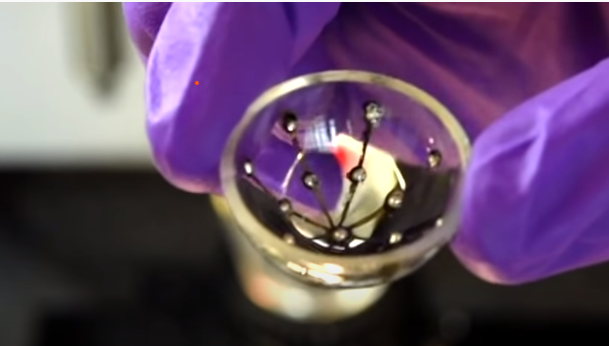
The world’s first 3D eyes are here!
World’s first 3D Artificial Eye
In the era of technology and modernization, the revolution in the health and medicine sector is an advancement for the human race. Since for many years, we have been using the cure for the uncountable disease, but the clear vision was always an issue with no perfect solution to it. As an icebreaker, the new development has come to the limelight – “3D Artificial Eye”.
What are 3D artificial eyes?
It is a piece of good news for the visually impaired patients whose hopes rely on the existing prosthetic eyes. Scientists from the Hong Kong University of Science and Technology are the skilled brains behind this invention. This technology recreates the original structure of the eye. It is said to have the capability better than the actual human eye. It may detect infrared radiation and offers a sharp vision even in the dark.
What leads through the breakthrough?
According to ScienceDaily, the 3D artificial Retina comprised an array of nanowire light sensors. They imitate the human photoreceptors of the retinas. The nanowire light sensors then are connected to a bundle of liquid-metal wires. These act as nerves. “It further successfully replicated the visual signal transmission to reflect what the eye sees onto the computer screen.” – Prof. FAN Zhiyong and Dr. GU Leilei from the Department of Electronics and Computer Engineering at Hong Kong University of Science and Technology (HKUST).
“As the nanowires have a higher density than photoreceptors of the Human Retina, the artificial Retina are better.
It receives more light signals and can achieve higher image resolution. The sensor’s sensitivity and spectral range could attain enhancement in the future.
As per another report published, the nanowire light sensors used for the electrochemical eye. “
“It can directly connect to the nerves of the visually impaired patients. They said, unlike in a human eye where bundles of optic nerve fibers (for signal transmission) need to route through the Retina. Typically pore from the front side of the Retina to the backside is the route. It creates a blind spot in human vision before reaching the brain. The light sensors that now scatters across the entire human-made Retina. In turn, this could each feed signals through its liquid-metal wire at the back. It eliminates the blind spot issue as they do not have to route through a single spot.”
Is there any Future Scope?
Yes! The team of Dr. GU Leilei and Prof. FAN Zhiyong collaborated with the University of California, Berkeley on this project, and in the journal ‘Nature’ their findings have recently published.
Prof. Fan said, “I have always been a big fan of science fiction. I believe many technologies featured in stories such as those of intergalactic travel, will one day become a reality. However, regardless of image resolution, angle of views, or user-friendliness, the current bionic eyes are still of no match to their natural human counterpart. A new technology to address these problems is in urgent need, and it gives me a strong motivation to start this unique project”.
He further added, “In the next step, we plan to improve further the performance, stability, and biocompatibility of our device. For prosthesis application, we look forward to collaborating with medical research experts who have the relevant expertise on optometry and ocular prosthesis.”
What about the existing technology?
For many years we have been using the Prosthetic Eye, is also known as an ocular implant. It helped in the prevention of the tissue in the eye socket from growing. Accidents here can be fatal. But the implant restores no vision, but it only fills the area to give the face an even look.
Next, we have Bonic Eye that potentially changed the lives in some way. Bionic Eye managed to restore the primary sight in humans with visual impairment. Hence allowing them to be more independent, mobile, and living a healthy life to an extent. But the bionic eye had some limitations.
It might have enabled the person to live a healthy life with both eyes working, but it lacked in providing the quality images to the extent some may hope. It, however, allowed people to discern light, movement, and shapes, but the limitation is considerable because the current implant has only 60 electrodes. To see naturally, we need about a million.
There then we are introduced with Electrochemical Eye or EC Eye or 3D Artificial Eye. The working principle of the artificial eye involves an electrochemical process adopted from a type of solar cell. In faith, each photosensor on the artificial Retina can serve as a nanoscale solar cell. With further modification, the EC-Eye can be a self-powered image sensor. There is no need for an external power source nor circuitry when used for an ocular prosthesis. It’s more user-friendly as compared with the current technology. Hence, this development can allow visually impaired persons to get vision. They get more light signals and higher image resolution than the actual eye. If the advancement proceeds, as quoted by developers, there is a probability of night vision in the implanted eye as well.
To conclude, there was a time when technology was merely a word of the future.
Slowly, the world moved ahead, leading to the development in the field of medical science. Surgery was necessary, and organ transplantation hugely relied on another human. With this kind of success in the health and medical world, the cure has become more accessible and less dependant on donors. As we are still moving, the future looks brighter.




